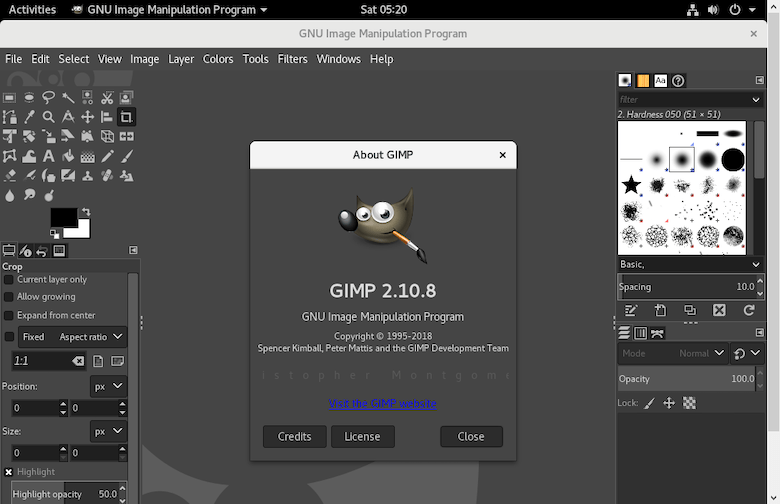How To Install GIMP on Manjaro

In this tutorial, we will show you how to install GIMP on Manjaro. GIMP is a versatile image editing software that rivals commercial alternatives like Adobe Photoshop. Its open-source nature makes it an attractive choice for many users, but to harness its capabilities on Manjaro Linux, you’ll need to install it properly.
This article assumes you have at least basic knowledge of Linux, know how to use the shell, and most importantly, you host your site on your own VPS. The installation is quite simple and assumes you are running in the root account, if not you may need to add ‘sudo‘ to the commands to get root privileges. I will show you the step-by-step installation of the GNU Image Manipulation Program (GIMP) on a Manjaro Linux.
Prerequisites
- A server or desktop running one of the following operating systems: Manjaro, and other Arch-based distributions.
- It’s recommended that you use a fresh OS install to prevent any potential issues.
- SSH access to the server (or just open Terminal if you’re on a desktop).
- Ensure that your Manjaro system is connected to the internet. This is crucial as it allows you to download the required packages and the GIMP installation.
- A
non-root sudo useror access to theroot user. We recommend acting as anon-root sudo user, however, as you can harm your system if you’re not careful when acting as the root.
Install GIMP on Manjaro
Step 1. To ensure a successful installation, it’s essential to have up-to-date package repositories. Use the following command to update your system’s package list:
sudo pacman -Syu sudo pacman -S base-devel
Step 2. Installing GNU Image Manipulation Program (GIMP) on Manjaro.
GIMP may have some dependencies required for proper operation. These dependencies should be installed automatically when you install GIMP, but it’s always a good idea to double-check. Use the following command:
sudo pacman -S gimp
Pacman will prompt you to confirm the installation. Accept the prompt by typing ‘Y‘ and pressing Enter.
Step 3. Launching GIMP on Manjaro.
Once the installation is complete, you can launch GIMP by searching for it in the application menu or by running the following command in the Terminal:
gimp

If, for any reason, you need to uninstall GIMP, you can do so using Pacman. Use the following command:
sudo pacman -Rns gimp
Step 4. Troubleshooting Common Issues.
While GIMP is a robust and reliable tool, you may encounter occasional issues. Here are some common problems and their solutions:
-
GIMP Doesn’t Launch: If GIMP fails to launch, it might be due to missing dependencies. Reinstall GIMP using the
sudo pacman -S gimpcommand to ensure all dependencies are present. -
Performance Issues: If GIMP runs slowly, consider closing unnecessary applications to free up system resources. Additionally, check if your system meets the recommended hardware requirements for GIMP.
-
Crashes: If GIMP crashes frequently, make sure your system is up to date. Outdated system libraries or graphics drivers can cause instability. Use
sudo pacman -Syuto update your entire system.
Congratulations! You have successfully installed GIMP. Thanks for using this tutorial to install the latest version of the GNU Image Manipulation Program (GIMP) on the Manjaro system. For additional help or useful information, we recommend you check the official GIMP website.